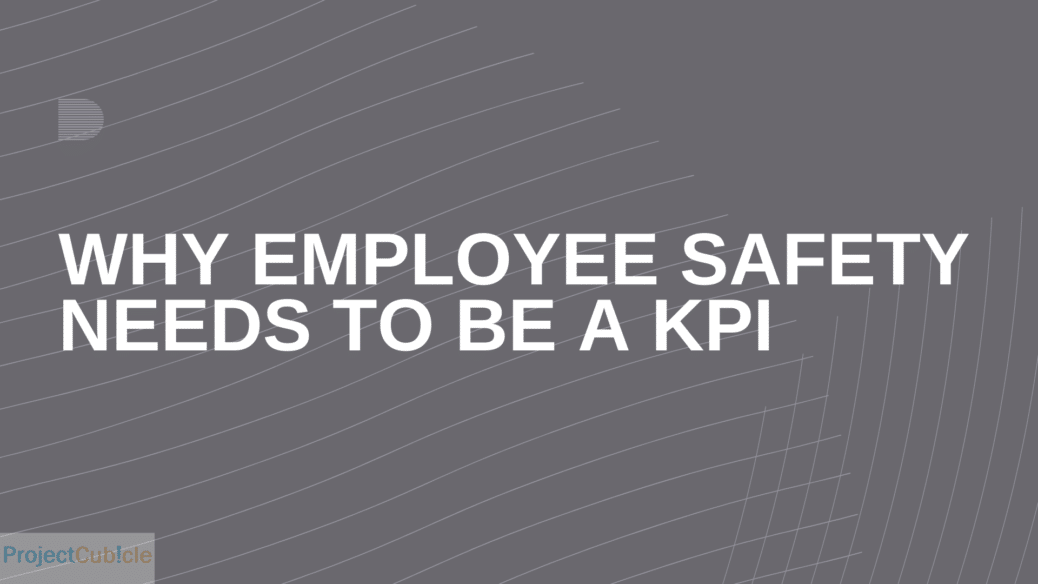Why Employee Safety Key Performance Indicator (KPI) Needed?
Health and safety should always be a priority in the workplace, not only because employee well-being is directly connected to productivity but also because employers have a legal responsibility. The rate of non-fatal injuries at work in the UK during the year 2021/22 is 565,000, with only a small portion of these being reported by employers. Employee safety KPI can help employers determine which safety standards are already being met and which standards need more resources. From saving your business thousands to improving company relations with clients, there are so many benefits to prioritizing safety as a KPI. So, what are the safety KPIs?
Table of Contents
Why Employee Safety is Critical as a Key Performance Indicator (KPI) ?
- Protecting human lives: The primary reason for prioritizing employee safety as a KPI is to protect the lives and well-being of the workforce. Every employee has the right to work in a safe and healthy environment, free from hazards and risks. Making safety a KPI emphasizes the importance of safeguarding employees and preventing accidents or injuries.
- Legal and ethical obligations: Employers have legal and ethical obligations to provide a safe working environment. By establishing employee safety as a KPI, organizations demonstrate their commitment to fulfilling these obligations and upholding their duty of care towards their employees.
- Proactive hazard identification and mitigation: Safety KPIs encourage organizations to proactively identify and mitigate workplace hazards. By monitoring safety metrics, companies can identify potential risks, assess their impact on employee safety, and take appropriate preventive measures to minimize or eliminate those risks.
- Continuous improvement: Safety KPIs drive continuous improvement in safety performance. By monitoring safety indicators and setting improvement targets, organizations can identify areas for enhancement, implement corrective actions, and measure progress over time. This iterative process helps create a safer work environment and cultivates a culture of ongoing safety improvement.
Financial Implications of Employee Safety Key Performance Indicator (KPI)
Accidents at work can cost your business a lot so if you could prevent taking a large financial loss, why wouldn’t you? The fees can really mount up as you’ll need to think about hiring costs, claim payouts, equipment damage, and covering sick leave when people are off. The decrease in productivity, staff morale, loss of reputation, and sales can also incur massive losses in time and money.
If you’ve experienced an accident at work and are looking to make a claim, don’t wait to contact an expert. You could be in with the chance to receive compensation for any injury or work-related illnesses you received due to employers failing to follow health and safety regulations.
Maintaining Relationships
Irresponsibly managing risks in the workplace not only affects your work but employee safety KPI results. But can damage your relationships with suppliers and potential investors. This is not only because you are breaching a legal obligation to your employees. But also because partners are looking to expand and invest in businesses that are committed to sustainability and corporate responsibility.
The cost of workplace accidents and claims may portray your company as not being a viable business venture. Without expansion opportunities, your business could face stagnancy or even closure. You lose your competitive advantage as trust in your reputation and brand depletes to directly affect your profitability.
Public Relations
Nobody wants to do business with an organisation that risks the health and safety of their employees and in turn the quality of their product. When you put effort into safeguarding worker well-being and establishing appropriate safety practices, it’s a win for everybody. You transform your employees from numbers into individuals that are loyal to your business and feel valued.
Your efforts will be seen by outside visitors. And this could increase your chances for future business and expansion for business. There is a recent focus on ethical purchasing from the point of view of clients. So you can secure your market by ensuring each area of your supply chain is ethical.
Identify Areas for Improvement
Employee safety Key Performance Indicator (KPI) helps identify specific areas or processes where safety improvements are needed. By monitoring indicators such as the number of incidents, near misses, or safety training completion rates, organizations can pinpoint high-risk areas and take proactive measures to mitigate hazards and reduce accidents.
Employee safety KPIs allow companies to compare their safety performance against industry benchmarks or internal goals. This benchmarking helps identify best practices, areas of strength, and areas where improvement is required. It also provides a basis for setting realistic safety targets and tracking progress over time.
Many industries are subject to safety regulations and standards imposed by government agencies. Employee safety Key Performance Indicator (KPI) helpS organizations ensure compliance with these requirements by tracking metrics such as incident rates, safety training compliance, or adherence to safety protocols.
Employee Engagement and Morale
Prioritizing employee safety through KPIs demonstrates a commitment to the well-being of the workforce. This fosters a positive safety culture, boosts employee morale, and enhances engagement. When employees feel safe and supported, they are more likely to be productive, loyal, and motivated.
Reputation and stakeholder trust. A strong safety record and a commitment to employee well-being enhance an organization’s reputation and build trust among stakeholders. This is including employees, customers, investors, and regulatory bodies. Positive safety performance demonstrates responsible corporate citizenship and can positively impact brand image and business relationships.
Cost Reduction via Employee Safety Key Performance Indicator (KPI)
Workplace accidents and injuries can result in significant financial costs for organizations. Hence, including medical expenses, worker’s compensation claims, legal fees, and productivity losses. By monitoring safety KPIs and implementing measures to reduce incidents, companies can minimize these costs and protect their bottom line.

Valencina has more than 25 years of experience as an IT consultant with a great focus on enterprise application UI/UX. She has experience working across multiple industries, acting both in an advisory role, as well as hands on in the technical build of solutions. Valencina is the co-founder and COO of Nitera Training Services.










